The main aim when cycling your new fish tank is to make sure the aquarium is habitable. The best way to encourage this process is by introducing bottled bacteria that act as an aquarium cycle starter. If done properly the cycling will only take 2 weeks instead of the traditional 8 to 10. This is because the nitrogen cycle can be rushed with the right set of beneficial bacterial species.

The good news is that, be it freshwater or saltwater, your new setup will likely benefit from a good nitrifying bacterial colony. I do appreciate a fast nitrogen cycle, so I boost my aquariums with a bottle of healthy live bacteria when needed.
So what’s the best aquarium supplement that acts as a beneficial bacteria starter?
The Best Aquarium Bacteria Starters And Supplements?
Before we go through each entry, have a look at this comparison chart of the reviewed products:
| Name: | Recommended for: |
|---|---|
| 1. Tetra SafeStart Plus | A freshwater aquarium |
| 2. BIO-Spira | Saltwater fish only and reef tanks |
| 3. Fluval Cycle | good for both fresh and saltwater aquariums, cloudy water / bacterial blooms |
| 4. Seachem Stability | effective for freshwater and saltwater fish tanks alike |
| 5. API Quick Start | for planted fish tanks and ongoing biofilter maintenance |
How effective is a nitrifying bacteria supplement depends on how quickly the strains it contains are going to establish themselves and coordinate the nitrifying process.
I will walk you through the reviews of brands that I’ve personally used.
Here are the best beneficial bacteria starters for a home aquarium:
1. Tetra SafeStart Plus – Top Bacteria Starter for Freshwater Fish Tanks
Click to compare pricing + see MORE photos of this product at:
Tetra SafeStart Plus is one of the most reliable bacteria starters you can find when it comes to the natural removal of ammonia and nitrites from a freshwater aquarium.
It is the best supplement for starting a colony of beneficial nitrifiers, but don’t buy into the claim that it instantly cycles your fish tank.
That’s just too good to be true.
What is probably meant on the label is that it immediately begins the cycling process, which goes on for two weeks before you see the final results.
Anyway, ensure that the bottle you purchase was recently manufactured since the old stock is less effective.
For what it’s worth, Chewy and Amazon usually have a good supply of fresh stock, unlike small local fish stores.
Author’s note: There is some ammonia in the bottle to nourish the bacteria (a very small amount). This is a good sign and it makes sense because it means that there are actual living organisms inside.
Anyway, the bacteria need this accompanying ammonia to survive before your new freshwater aquarium can provide them with fish waste.
For this reason, you should avoid applying any water conditioner that is going to lock the ammonia away, while cycling the fish tank with Tetra SafeStart+.
Ammonia detoxifiers convert ammonia into ammonium or iminium salts because the latter two are harmless to fish. However, studies have suggested that beneficial Ammonia-oxidizing bacteria prefer to feed on ammonia (NH3) and not Ammonium (NH4+).
Good dechlorinators such as Prime have ammonia-detoxifying properties.
Obviously, aquarium water should not contain chlorine since it kills these bacteria (and fish).
Thus if your tap water has chlorine or chloramine, you have to dechlorinate it with something like Prime and wait for about 24 hours before applying Tetra SafeStart Plus to it.
Doing so will help the bacteria starter to properly kickstart the nitrogen cycle in your new fish tank.
You could also dechlorinate tap water by boiling it beforehand, but that takes way too long to be feasible.
Anyway, for better cycling results, start by shaking the Tetra SafeStart bottle.
Then pour in the whole bottle or at least twice the recommended dose.
In fact, I advise you to keep a second bottle at hand and apply that if there’s an unexpected ammonia spike, just in case.
After all, these are beneficial bacteria, so there is no harm in having as many of them as possible when cycling a new fish tank.
It’s better to have enough beneficial bacteria than too few.
When I use it, I usually pour in the whole 1.69 Oz bottle to cycle aquariums of up to 40 gallons.
Remember that you should only do a water change after two weeks since if you do it sooner, you risk disrupting the bacterial ecosystem.
The said ecosystem is actually the balance between all kinds of bacteria, not just the beneficial nitrifiers.
Anyhow, what I really appreciate in the Tetra SafeStart Plus supplement is that has an aquatic strain of live nitrifying bacteria.
I’m saying this because some cheap industrial alternatives are derived from terrestrial strains.
Terrestrial strains can kickstart the nitrogen cycle in aquariums as well, but eventually die out, unlike the aquatic ones (which you want to have in your new tank).
So follow the aforementioned simple guidelines when cycling your tank, and Tetra SafeStart+ is going to be one of your best bets as a freshwater aquarium bacteria starter.
Advantages- The bacteria form colonies and start to multiply as soon as you apply this product to the fish tank.
- One bottle of Tetra SafeStart Plus is enough to establish the bacteria.
- It is highly effective and you can expect a fully cycled aquarium in 2 weeks.
- Using it is a no-brainer since you just add it to the fish tank’s water and wait.
- You can also do safe fish-in cycles if you add 1 SMALL fish per 10 gallons of aquarium water
- Cannot be used for starting saltwater aquariums.
2. Instant Ocean BIO-Spira – Best for Saltwater FO & Coral Reef Aquariums
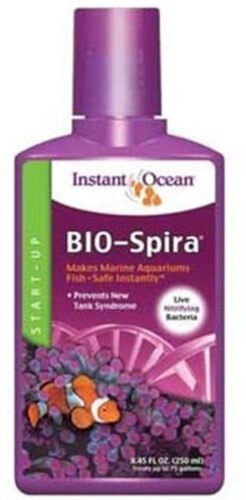
I consider Instant Ocean’s saltwater bacteria starter to be the best option for speeding up the development of beneficial nitrifying bacteria in new marine aquariums. If you’re too impatient to wait for the nitrogen cycle to naturally establish itself you will likely benefit from using BIO-Spira.
So you’ve chosen your starter saltwater fish and have moved onto researching ways to accelerate the nitrogen cycle in your new tank.
For such cases, Bio-Spira is my go-to.
Moreover, it works fantastically for maintaining the biofilter in established Fish-Only (FO) and coral reef aquariums.
- a medication that has wiped out your biofilter;
- large water changes;
- the addition of live rock in order to populate it faster.
BIO-Spira’s live aquarium bacteria starter comes in a well-sealed bottle with a decent shelf-life.
Still, you should make sure to acquire the most recently manufactured bottle for the best results.
Anyhow, what I can confidently affirm is that after 3 to 5 days of adding this product and supplying the aquarium with ammonia for feeding purposes, your test kit will read 0 ppm for ammonia.
Moreover, the nitrite level in the aquarium water will go down considerably about a week after that.
You can also use Instant Ocean’s beneficial bacteria supplement when adding new fish to the tank, which helps in making up for the increased bioload.
Provided the product is not an old stock and it has been maintained at the right temperature, the 3.38 Oz bottle can treat a 30-gallon saltwater tank.
However, I usually double the recommended dose to speed things up.
A storage tip: High temperature can either kill the bacteria or significantly weaken the effect of the supplement. With its shelf-stable formula, you do not have to refrigerate it as it preserves itself.
Anyway, BIO-Spira is a combination of more than one species of beneficial bacteria. Supposedly it contains:
- Nitrosomonas;
- Nitrospira;
- Nitrococcus;
- Nitrosospira.
All of these bacteria are alive and healthy before opening the bottle.
The different strains work to ensure that Bio-Spira is always numbered with the best nitrifying bacteria for efficiently starting your new saltwater reef tank.
Advantages- The combination of various beneficial bacteria guarantees a fast cycling process.
- It does not make the water in your fish tank cloudy.
- It prevents the New Tank Syndrome.
- Is specifically designed for saltwater aquarium use.
3. Fluval Cycle – Good for Starting Both Saltwater and Freshwater Tanks
Fluval Cycle is one of the fastest working bacteria starters and also is very affordable. All of this makes it one of the best out there if you want fast results and are on a budget.
Fluval Cycle works in both freshwater and saltwater setups which is somewhat unique in the realm of bacteria starters.
From what I understand they put in both saltwater and freshwater bacteria strands in it upon use, one dies out depending on the system.
This is also how API’s Quick Start work, so Fluval Cycle is a good alternative to it.
What I like about this product in particular is how fast it works.
I’ve seen it cycle tanks within a week and a half.
Admittedly those fish tanks were not overstocked.
However, you should not overstock your tank if you’re a beginner so that’s obviously a good use case.
Also, because of how quickly it tends to increase beneficial bacteria numbers Fluval Cycle is also good for controlling cloudy water in already-cycled fish tanks.
Water cloudiness is a normal stage of cycling new tanks, and you will likely see it happening whether or not you use a bacteria starter.
The cloudiness is caused by a set of (non-beneficial) bacteria that are the result of too much waste in the tank and, therefore, a crashed Nitrogen Cycle.
In already-cycled tanks that get cloudy, on the other hand, there are many fish lives depending on the speedy recovery of that same Nitrogen Cycle.
In such cases, it makes sense to use a bacteria starter that works really fast. Such bacteria starters are Fluval Cycle and Tetra SafeStart Plus, for example.
Another thing I like about Fluval Cycle is how competitively it is priced. It’s cheaper than most per milliliter and it still works as great.
Finally, don’t be surprised by Fluval Cycle’s long shelf life – as with other products of this type the bacteria inside “activate” once they enter water.
This is completely normal and I prefer it like that because it makes storing my bacteria starters very simple.
No refrigeration and weird dosing on a clock.
And before I move on – I recommend shaking Fluval Cycle REALLY WELL before using it. Like, don’t spare it.
Author’s note: Don’t forget to check the price in online shops and compare it with your local pet stores before deciding where to buy. In my experience, the physical pet stores occasionally double the price for no good reason.
So whether you are just a novice or a star-studded veteran in fish-keeping, Fluval Cycle is going to make things easier for you during tank cycling.
Advantages- It has a relatively long shelf life.
- It can be used in both saltwater and freshwater aquariums.
- It speeds up the cycling process significantly.
- It is affordable.
- It is highly concentrated, so one bottle can serve a tank as large as 500 gallons (you can still use more than the recommended dosage though).
- You always need to SHAKE the bottle hard before use. If you forget this step the product may not prove as efficient.
4. Seachem Stability – The Popular Choice
Given the popularity of Seachem Prime, I’d expect the same quality from their bacteria starter Seachem Stability. Well, a lot of fish keepers agree that Stability is a fantastic product judging by the mass amount of positive feedback. Me, personally, I think the same.
Seachem Stability does exactly what it claims to do and it does it timely. You can’t use this and say that it did not work or that your tank cycled slowly.
Seachem Stability will cycle a new fish tank in up to 2 weeks. This bacteria starter is a perfect defense against the “New Tank Syndrome” where pet fish die from ammonia poisoning.
As a matter of fact, Seachem Stability works so predictably well that I don’t have much to say about it.
Its price is on par with its competitors, its bacteria formula works for both freshwater and saltwater aquariums and you’ll get good customer support with such a trusted brand.
Seachem’s Stability is a good alternative to my other top-recommended product – Tetra SafeStart Plus. I still recommend the latter more though.
See, I’m very pro-Seachem when it comes to aquarium supplements typically.
In the case of Stability, however, I just see Tetra SafeStart Plus as the superior product.
This has been my experience when testing and comparing the two.
SafeStart Plus works slightly faster and handles Nitrites better, the latter being important in a freshwater aquarium.
Still, if you want a trusted brand of bottled bacteria you can’t go wrong with Seachem Stability. Show them some love.
Advantages- The people’s choice.
- For both saltwater and freshwater aquariums.
- Affordable.
- Concentrated solution.
- This is not really an issue with Seachem Stability but with its storage at warehouses. It seems that when ordering it online from time to time you get old or expired bottles. If that happens with Amazon, just ask for a replacement / refund.
5. API Quick Start Nitrifying Bacteria – For New Planted Tanks and Ongoing Maintenance
Click to compare pricing + see MORE photos of this product at:
The API company has been in the fish-keeping industry for many years.
I use this particular product of theirs routinely.
I consider API Quick Start to be the best supplement of beneficial nitrifying bacteria for ongoing aquarium maintenance. It reduces ammonia levels really quickly when adding new fish to established freshwater fish tanks.
It is usually during such maintenance that some fish die or fall sick due to ammonia and nitrite build-up (like a filter change, the addition of new fish, etc.).
With a bottle of this aquarium bacteria starter, you won’t worry about what to do with a dead fish that’s floating in the tank or a sick one spiraling while leaning on its side.
When used for starting the nitrogen cycle, these live, nitrifying bacteria initiate their ammonia-oxidizing processes immediately after being added to the aquarium.
My experience has been that it won’t take long (read not more than 14 days) before the aquarium water is conducive for new fish.
Unlike Tetra SafeStart+, which virtually skips the build-up of nitrite after ammonia, API Quick Start forces the nitrogen cycle through its natural course.
This means that you will observe a nitrite spike right after the ammonia one.
For this reason, I consider API Quick Start to be the best nitrifying bacteria starter for cycling a new, planted fish tank, where the aquatic plants will take care of the nitrite spike.
It’s a well-known fact that live aquatic plants prefer ammonia and nitrIte over nitrAtes for nutrition.
With API Quick Start you’ll both speed up the cycling of the planted aquarium and feed your live plants in the process.
Note that you can still dose aquatic plant fertilizers to the aquarium during cycling with this bacteria starter.
Though this happens rarely, during the application, the water in your fish tank may turn cloudy.
This, however, is not going to last long.
Anyway, API Quick Start is compatible with both saltwater and freshwater aquariums.
To cycle a saltwater tank you just double the recommended dose for freshwater aquariums.
Author’s note: Though I like Quick Start, I’d still use BIO-Spira for starting a marine tank.
Anyway, API’s bacteria starter requires no refrigeration though you should ensure that it is always in a cooler temperature condition.
Needless to say, temperatures beyond this range could weaken or kill the live nitrifying bacteria inside the bottle.
Finally, note that Quick Start’s effectiveness is a matter of using it correctly.
Related AQUAnswers Article: Tetra SafeStart VS API Quick Start – Which is Better and How to Use Them
Advantages- Prevents waste-related fish deaths or ailment.
- Enables you to add fish into your new tank sooner rather than later.
- It can be used in either a saltwater or a freshwater tank.
- It requires no refrigeration.
- Does a fantastic job at cycling planted tanks.
- It is not as quick as advertised, as it takes around 2 weeks before fully cycling your fish tank.
A Complete Beginner’s Guide to Aquarium Bacteria Starters
There are crucial factors you need to know when choosing the most effective beneficial bacteria for your aquarium.
The following is a complete guide to aquarium bacteria starters for beginners:
1. Employing the Right Set of Beneficial Bacteria
I’ve done a lot of research to make sure that each bacteria supplement listed above contains what it should in order to kick-start the nitrogen cycle in an aquarium.
My research on the subject showed using the wrong bacteria could be a fruitless endeavor. Also, I’ve personally used the bottles when starting my own fish tanks or those of clients. Though I used to be an old-fashioned “do it the natural way” guy, I’m so glad I’ve tried these products because by doing so I’ve managed to speed things up dramatically.
Here is why choosing the right set of beneficial bacteria is vital:
The nitrogen cycle requires more than one set of beneficial bacteria.
Therefore, a formidable bottle of beneficial bacteria should have at least two distinct strains: one that breaks down ammonia into nitrite and the one that converts the nitrite into nitrate.
One of the most well-known strains of the former is Nitrosomonas. It feeds on ammonia and then produces nitrite as a byproduct.
How fast this conversion occurs depends on the population of the bacterial colony.
Nitrobacter is another set of bacteria specialized in converting nitrite (NO2-) into nitrate (NO3-).
Some other beneficial bacteria involved in biological filtration are Nitrospira, Nitrococcus, and Nitrosospira.
Some brands of bacteria starters do not disclose the strains they use on the bottle.
I reached out to others in order to find out what their bottle contains.
The smaller companies may find it cheaper to employ terrestrial strains, which outcompete the actual aquatic bacteria and then die out.
This sends a user into a vicious circle of continuously adding these products to the aquarium because otherwise, the nitrogen cycle would crash.
2. Add Beneficial Bacteria Whenever There’s An Increase In Bioload Compared To Bacterial Biomass
This means that you always need to strike the right balance between the two variables if you are to maintain a cycled fish tank.
How often you use a bacteria supplement in your aquarium is determined by the following:
Every time you add a new fish to the aquarium, it follows that the produced ammonia is also going to increase.
You need to add more bottled bacteria to reinforce the ongoing nitrogen cycle.
Otherwise, the extra ammonia would just build up quickly enough to cause trouble with your pet fish.
Also, beneficial nitrifying bacteria mainly harbor surfaces.
Whenever you remove used filter media to replace it with a new one, the old one goes with all the bacteria that are clinging to it because you cannot physically detach them.
This effectively reduces the population of beneficial bacteria in the aquarium and puts your fish in danger.
Therefore, you can replenish the bacterial biomass by dosing a bottle of your chosen aquarium bacteria starter.
The same rule applies when you vacuum the substrate or change decor since the tank loses beneficial nitrifiers in the process.
In short, always watch out for any addition to (or subtraction from) the aquarium that is going to alter the ratio between the bacterial biomass and the fish bioload.
3. Seek For Freshly-Manufactured Bottles
Since these bacteria are living things, each has a lifespan like any other creature.
So the more an unused bacteria supplement bottle stays on the shelf, the more the curve flattens until it eventually loses its stamina.
If you can’t find fresh products at your local fish store, you should consider buying them online. At Chewy or Amazon, in my experience, the stock is always recent.
4. Always Have a Test Kit Around
You do not have to wait until you see a sick or dead fish to realize all is not well in your aquarium.
As a precaution, you should be doing periodic water testing to check if the ammonia or nitrite levels are high.
In the case they are, you need to add more beneficial bacteria to accelerate the conversion rate.
The ammonia level should never be above 0.25 PPM, otherwise, your fish’s life would be at risk. A fully cycled aquarium reads 0 ppm of ammonia, 0 ppm of nitrite, and 10 or more ppm of nitrate.
Even when you are just starting a new aquarium, you need to be testing the ammonia and nitrite levels.
On that note, test strips are often used by beginners but only give a rough idea of the aquarium’s water parameters.
Liquid test kits, on the other hand, are reliable and very efficient in accurately measuring ammonia, nitrite, and nitrate.
I should probably recommend a good liquid test kit, in case you’re new to fish keeping:
The Master Test Kit from API seems to be an excellent option, and many seem to agree.
You can check it out on Chewy here or on Amazon here.
One practice I usually recommend to my friends who just start out in the hobby is to have an Ammonia Alert sensor in their fish tanks (after the nitrogen cycle has been established).
Though it sounds fancy it’s actually a really inexpensive and passive method of keeping you up to date with the ammonia levels in the aquarium.
A must-have!
However, a liquid test will always be more accurate than the Ammonia Alert, so don’t rely solely on the latter.
5. Check The Shipping or Storage Temperature
Extreme temperature ends up weakening or killing beneficial aquarium bacteria in bottles.
Take the time to ascertain that your new bacteria bottle has been kept at the right temperature.
If it is not damaged by high heat, buy it and keep it at that temperature until you are ready to use it.
Ordering from a reputable seller online like the ones I mentioned above is always a good strategy.
FAQs
Let me quickly answer some questions that often pop up when it comes to aquarium starters.
Do these products really work?
Aquarium starters work but you need to choose a trusted brand, follow the instructions closely, and properly store the bottle.
If the aquarium starter’s brand is fraudulent and has useless nitrifying bacteria in it, the Nitrogen Cycle in your fish tank won’t speed up.
If you don’t take an effort to store the bottle as the manufacturer recommends on the label then you risk killing the bacteria inside.
This makes the product completely ineffective.
Do you really need one to start a fish tank?
No, beneficial bacteria will find their way into your new fish tank as long as there’s a source of ammonia in there.
However, aquarium bacteria starters significantly cut down the time it takes for bacteria to establish in such an environment.
Sources of ammonia in an aquarium include any food, bio waste, or actual store-bought ammonia.
How to use one?
Following the instructions on the label of the bottle will yield good results.
Typically, introducing the new bacteria to your tank is as simple as pouring the recommended dosage directly into the tank’s water.
As a side note, I’ve found that Tetra SafeStart Plus is pretty much harmless to fish and invertebrates. So to ensure the best results I recommend overdosing to anyone who asks for my advice on using Tetra SafeStart Plus in particular.
What’s the best one for a betta fish?
There are some products that sell as aquarium starters specifically for bettas. However, Betta fish are simply freshwater fish and any good bacteria starter that works for a freshwater aquarium will work for your Betta.
Live vs. “inactive” bacteria
Aquarium starters can contain bacteria that actually live inside the bottle and inactive bacteria that get “activated” when poured into water.
The former probably cycles a tank the fastest but it’s difficult to store properly because it needs refrigeration at a certain temperature for the bacteria, etc.
Aquarium bacteria starters are confusing enough as it is for a beginner.
For this reason, I personally prefer to always recommend brands that contain “inactive” bacteria to people new to the hobby.
The bottle’s storage is easy and dosing is simple.
I’m saying all of this because if you head to the online forums to research this topic you’ll see people there slamming the inactive bacteria products.
That has become a new trend and, in my opinion, does the hobby a disservice.
I’ve even seen people there claim inactive bacteria bottles don’t work at all compared to the ones with live strands in them.
Well, if we have to be precise, a product with live strands will cycle your tank for between 4 and 6 days, and an inactive strand will take between 10 and 14 days.
I’m of the opinion that waiting 7 more days at the cost of not messing up the whole cycle thing is worth it.
Either, if you have experience with fish keeping and tank cycling you can try a product that contains live bacteria strands and needs refrigeration. Such one product is Fritz Zyme 7.
Can you put too much of these products in an aquarium?
Since bacteria starters use beneficial bacteria most of them can be safely overdosed in an aquarium. This type of bacteria does nothing more than consuming ammonia from the water in the fish tank. If there’s not enough ammonia for all the bacteria the surplus of them will just die out.
Can you add them to a tank with live fish in it?
Yes, the bacteria from these products is not harmful to fish. In fact, it’s actually recommended to add beneficial bacteria starters to an established tank when you add new fish to the system.
In Conclusion
The best thing about beneficial bacteria starters is that once you introduce them into the fish aquarium, you can sit back as they quickly take charge of the cycling process.
That gives you time to go about personal matters, only coming back to test the water for its ammonia, nitrite, or nitrate levels.
If you go the traditional way, you can’t be so sure how long you are going to wait for the cycling process to complete.
Drop me a comment if there’s anything at all you’d like to ask.

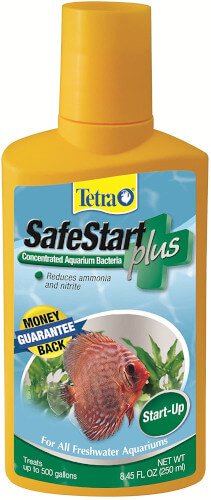




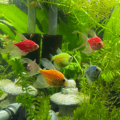


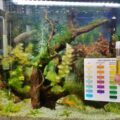

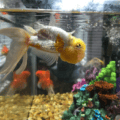
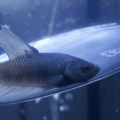

18 thoughts on “The 5 Best Aquarium Bacteria Supplements & Starters”